Each year we have several first timers at our NSW rogaining events, but we fail to get many people returning, particularly to the longer, bush events further away.
Why is this?
It’s been much discussed at various times, with suggestions that the sport should adapt by offering GPS categories so as to not become obsolete (https://nswrogaining.org/dinosaurs-morse-code-and-rogaining/) or allowing solo participants.
Others point out that the time commitment and distance can be a deterrent. Richard ‘Numbers’ Pattison looked at attendance at Paddy Pallin events from 2011 to 2019 and found that for every 50 kms that people had to drive from Sydney there were 44 fewer participants at the event.
In my view, there’s a variety of factors at play, but realistically this is a hard sport to get into due to the skill level required and its team nature. After my first rogaine I almost never came back.
What was my first experience like?
My first rogaine was a 6hr Paddy Pallin. I joined someone asking for a teammate and brought along a friend visiting from overseas. I had no skill in using a compass, and just a basic ability to read a map so I took a back seat – content to enjoy a day out in the bush. My two teammates didn’t hit it off leading to several tense moments during the event, so I was glad when the event was over and didn’t feel any desire to rogaine again.
So, why did I try a second rogaine?
It was a year later and a friend I’d made at the Sydney Summer Series (SSS) had lost his teammate due to illness. Two of us offered to join his team, and importantly I was more confident we’d all get along as we regularly had dinner together after SSS. This is the event where I got HOOKED and have raved about rogaining ever since.
So what was different?
- Team dynamic. Everyone got along.
- Having someone confident take me off-track. “So that’s this gully” E says, pointing to something below us and something on the map. (In my head I thought, “but what is a gully?!”) Then she turned us off the tops and soon afterwards we saw our checkpoint. How did she do that? I really wanted to be able to navigate like her.
- Seeing others’ fitness levels. Who were those crazies out their doing the 12-hr event? I was smashed after 6 hours! Can I one day manage a 12-hr event as well?
For me, I got captivated by the challenge of learning a new skill and competing in an enjoyable team experience. So I returned again and again, and joined the game of trying to find my perfect rogaining partner (https://nswrogaining.org/the-loneliness-of-the-long-distance-rogainer-the-search-for-the-perfect-partner/). To date I’ve rogained with 24 different people.
A pathway to getting good
So how do we support people in developing their skills and finding a team amidst the rogaining community?
We need to nurture newcomers to build camaraderie, confidence, navigation skills, route planning tactics and fitness. This provides a pathway to “getting good” at rogaining and feeling a part of the community, which should lead to attending longer, bush events.
I was lucky, second time round, to enjoy a supportive learning experience, and since then have witnessed how such a pathway can be created in a more formal setting.
Here is what we do in the University of Technology Sydney Outdoor Adventure Club (UTS OAC) to develop rogaining skills. The club runs canyoning, climbing, bushwalking and other trips where navigation skills will always be a benefit, so going rogaining is encouraged!
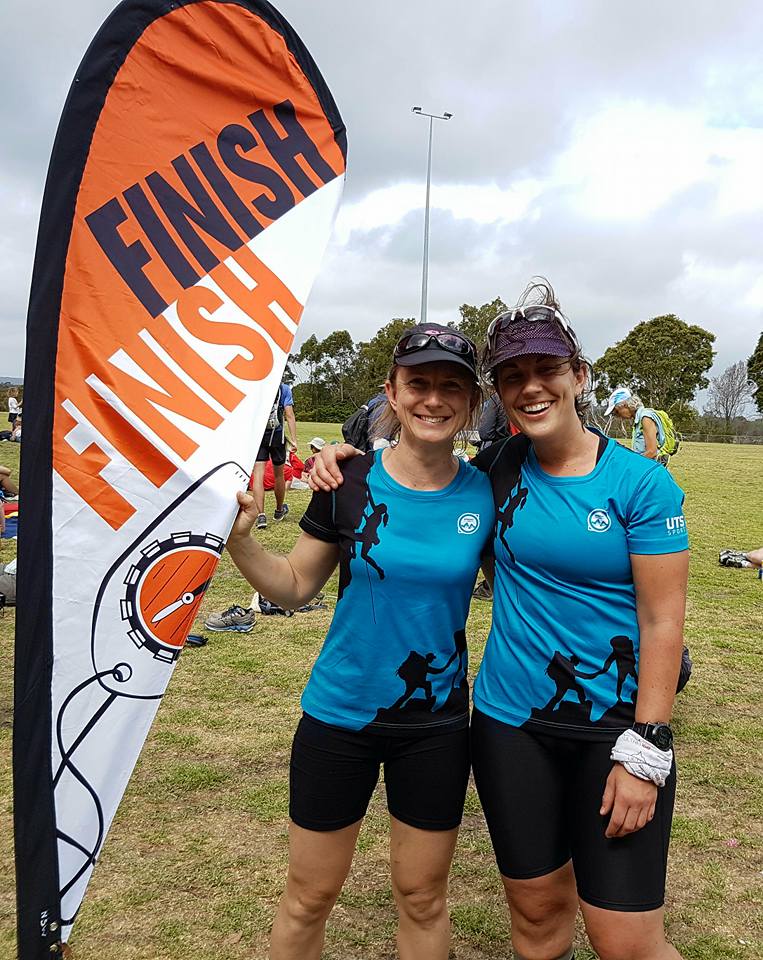
UTS OAC members at the Wahroonga 6hr Socialgaine in 2016
Rogaining? Never heard of it.
A trip leader generally posts every NSW rogaining event and some ACT ones to the club’s trip list, which makes club members aware of the sport. These are people who love the outdoors — rogaining’s perfect target market!
The trip leader then takes responsibility for ensuring participants have the relevant skills or information required before the event. They take care of both assigning teams and carpooling! This can be a tricky job at times, but generally there is a good match of suitable teammates based on fitness, experience, and expectations.
This removes some of the biggest challenges for new rogainers, particularly in finding a partner, getting to bush events and knowing what to do at their first event.
And it works — UTSOAC took out the novice category at the 24hr NSW Champs at Yengo NP in 2019.
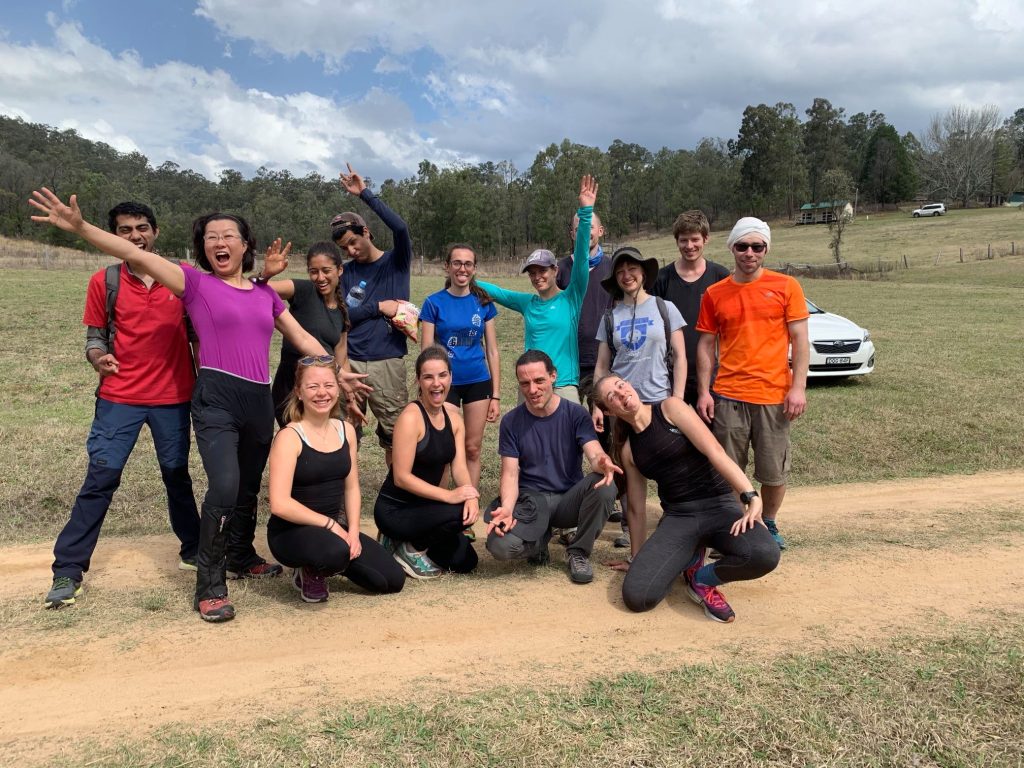
UTSOAC at the 24hr NSW Champs in 2019
Map reading & course planning skills
We used to run tutorials at UTS in the week before a rogaine that covered reading a map and the basics of choosing a route and following a compass bearing.
Covid meant this shifted to online Zoom sessions that have been recorded and are now available on demand, making it less onerous on the trip leader.
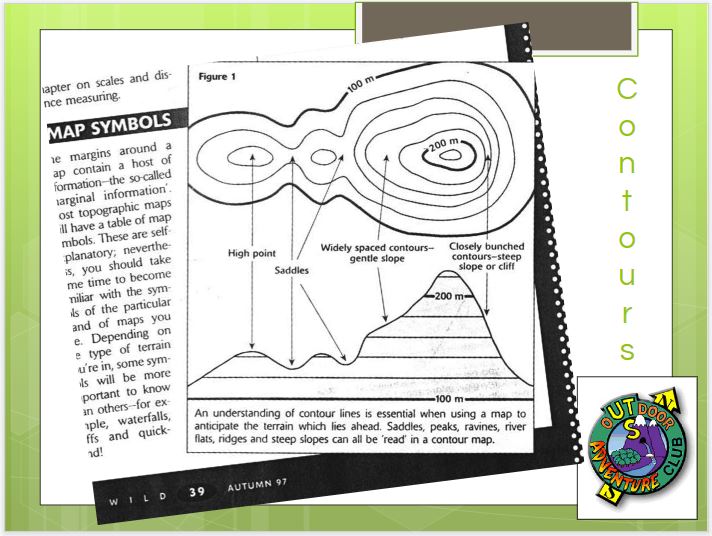
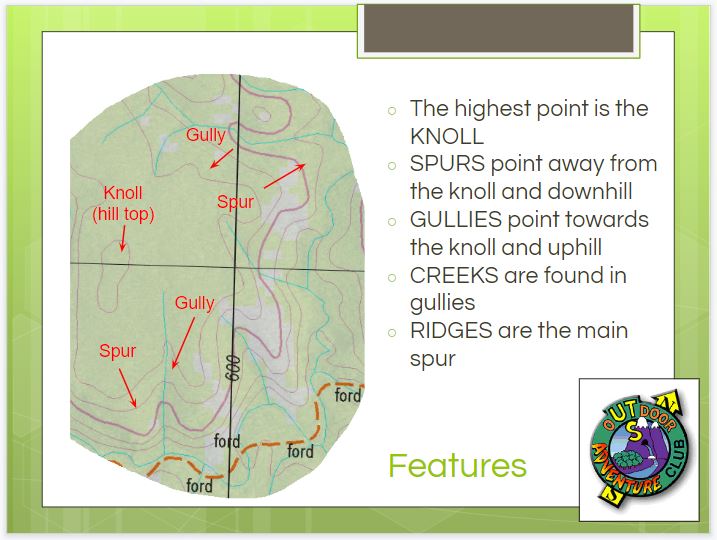
Gear, sleep, tactics
As members gain more experience they start branching out into longer events and in smaller teams. We have catch-ups to discuss gear, course planning tactics, why 8hr teams should considering signing up to their first 24hr event but getting a full night’s sleep, etc. These chats have taken place in climbing gyms, at the pub and over Zoom throughout the years.
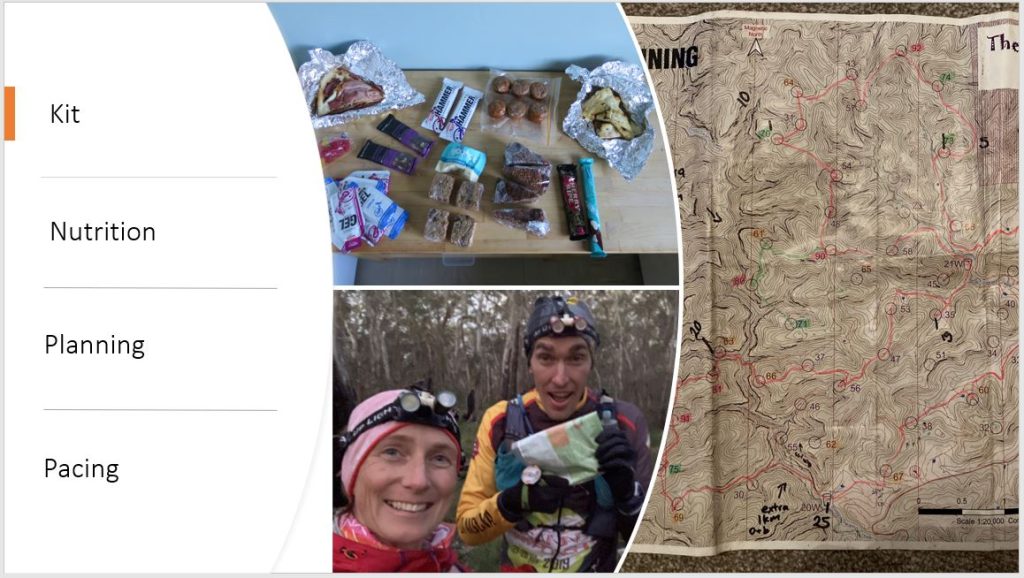
Field training
Obviously going to a rogaine provides experience but it can take a very long time to learn this way given the infrequency of events. Instead UTS OAC offers regular field training. This has been made waaay easier with the introduction of MapRun! Rather than creating our own courses and hanging tapes, we can return to previous courses using the app.
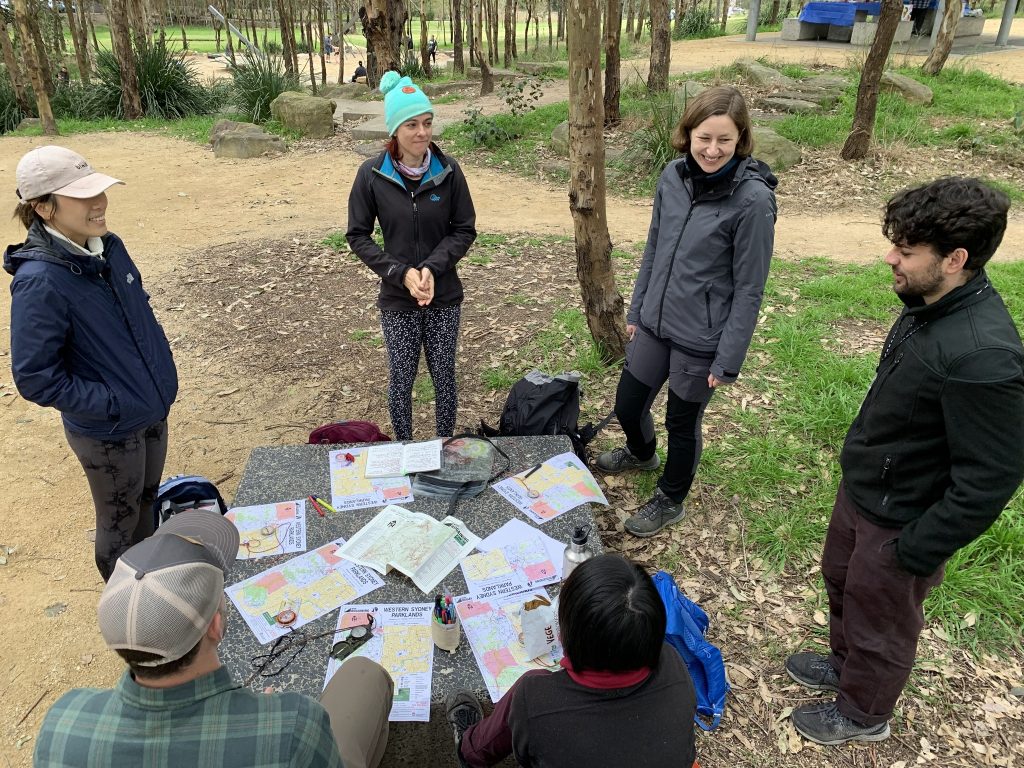
UTSOAC members training at Western Sydney Parklands using MapRun
For example:
- In 2020 we used the Catherine Hill Bay MapRun to work on the navigation of teams heading to Gundabooka and considering the longer event. The focus was primarily on route choice, how to attack checkpoints and pace counting. There were two experienced navigators on hand who took half the attendees each. We all rendezvoused at a checkpoint for lunch and then the groups swapped over to see what they could learn from the other leader after lunch.
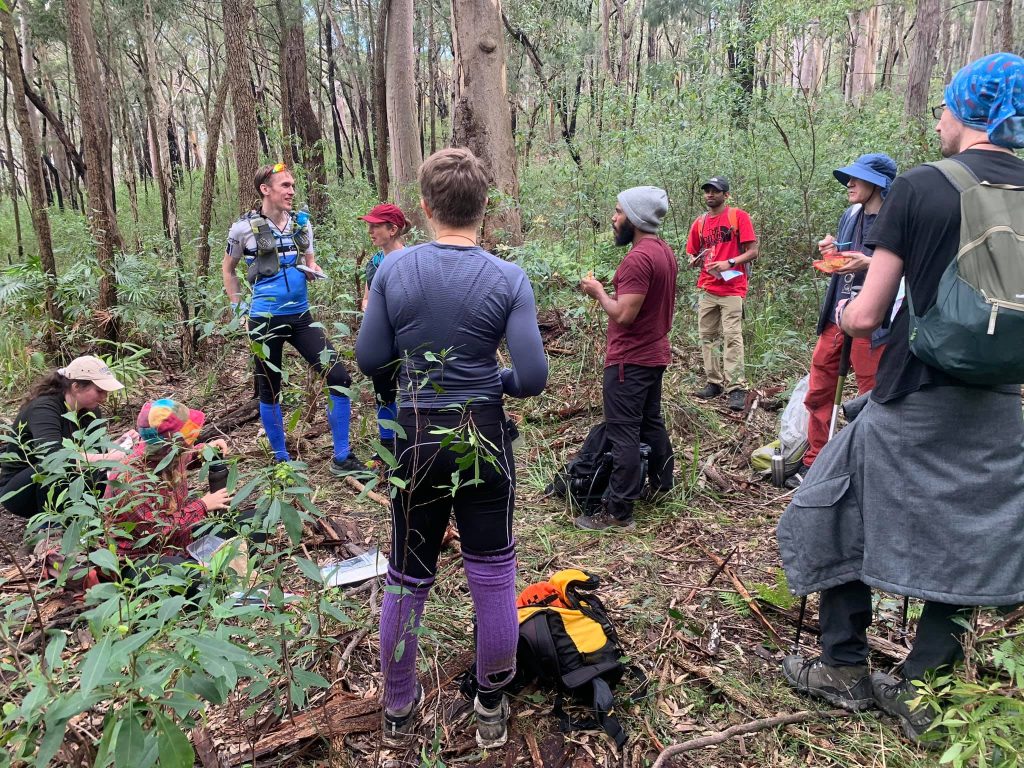
- In 2022 we used the Belanglo map loaded into Avenza to prepare members for the flat lands of Gundabooka. It was atrocious weather, but most members that had signed up to the NSW champs came along – so too one member who wasn’t signed up! We practised following compass bearings over distance, using Avenza to record our tracks. Then we could view the data straightaway to see how far we drifted and if it was always to the same side, etc. After lunch we had a short rogaine. The leader had hung a different coloured tape per team at each checkpoint. Teams set out in opposite directions, and we finished up once all the tapes & teams came back.
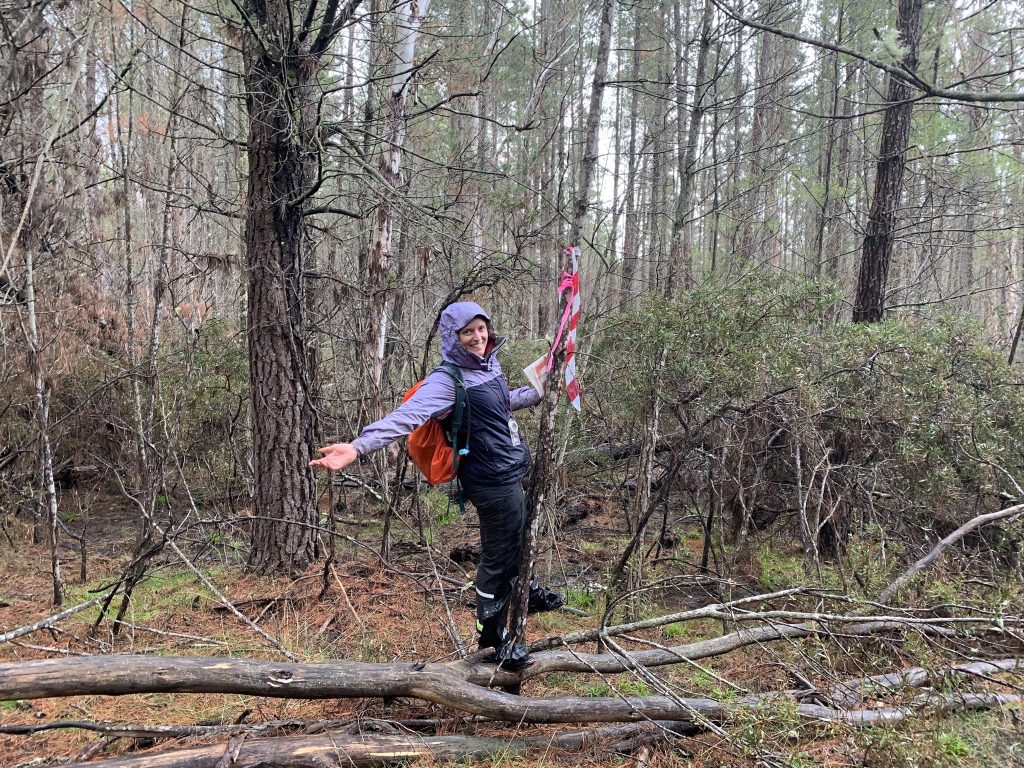
While I’m not supportive of introducing GPS to events, I am all for using it in training! It’s a great tool which helps with pace counting, matching map features to the ground, and ultimately in building confidence in the bush.
University club perks
When I first joined this club our rogaine entry fees were subsidised to encourage members to advance their navigation skills. These days rogaines are too popular among members that this subsidy no longer exists. Proof the club is doing something right!
How could the club afford to do this? Members pay an annual fee and UTS also contributes funding.
The club owns a lot of outdoor gear including 10+ compasses and map cases and is currently discussing the purchase of thumb compasses. The uni gives us free access to tutorial rooms for training, and this year they offered us their minibus to get to Gundabooka and back!
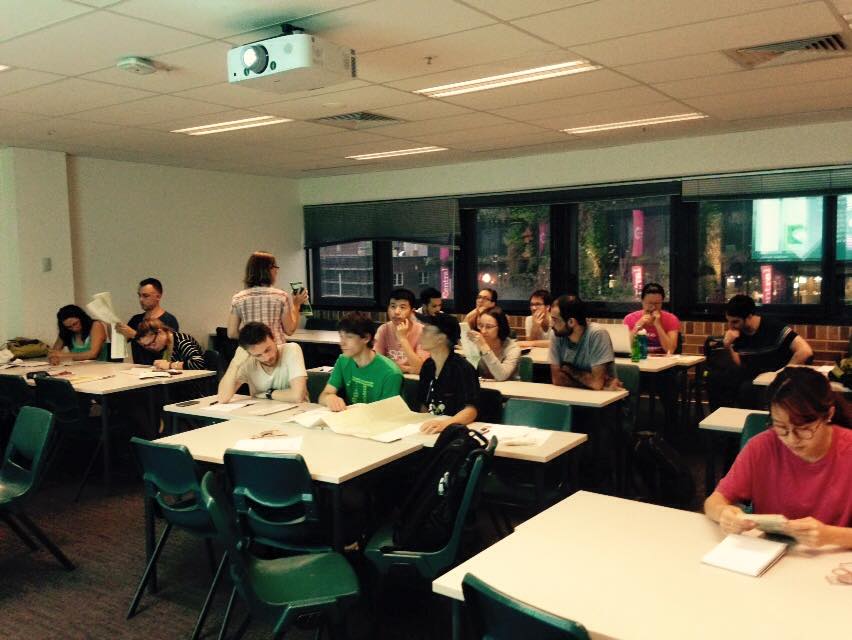
Map reading skills training night at UTS in the week before a rogaine event
Change takes time
UTSOAC didn’t have a rogaine specific training pathway back when I joined their club. They did post the odd rogaine, as that’s how I ended up at my first event, and they did have targeted navigation training for canyon and bushwalking participants and leaders. Today there are at least two UTSOAC teams at every rogaine and sometimes a lot more. There are also a healthy number of trip leaders taking turns to take members to events.
Realistically, building this kind of pathway was a 5+ year process and is reliant on the ongoing commitment of a number of people. It also requires continuity of enthusiasm when the current organisers move on from the club.
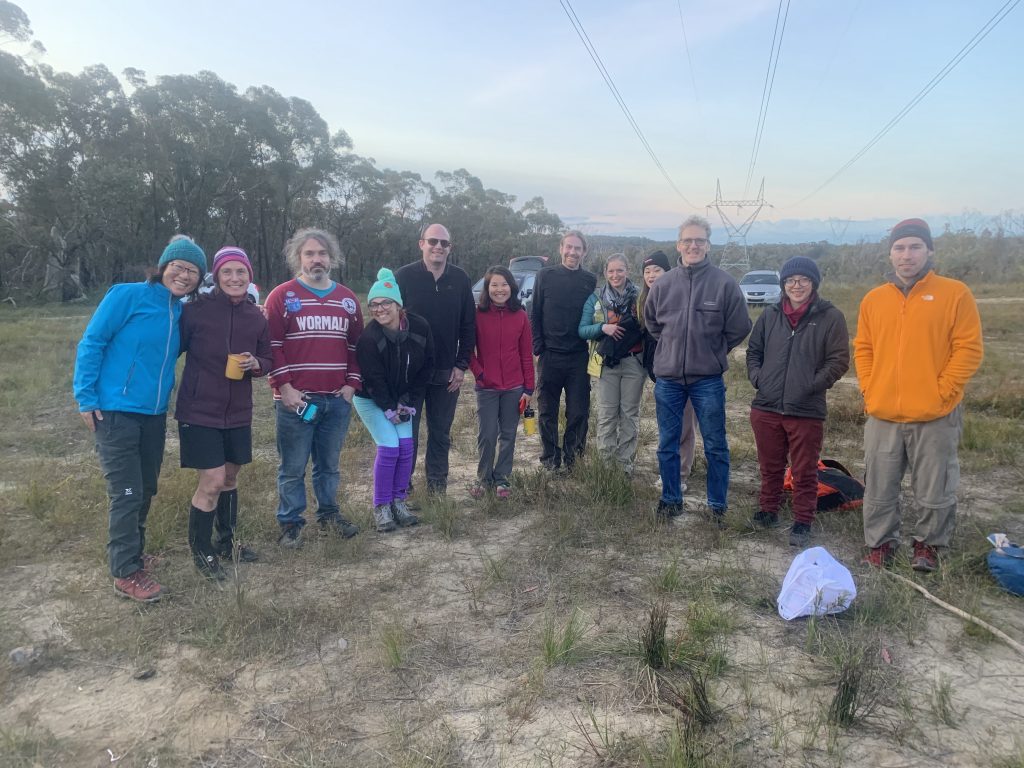
UTSOAC members at the 2022 Paddy Pallin rogaine in Bargo
There are far more experienced rogainers than those of us running training sessions in the UTS OAC, but perhaps this club model could be adapted for the rogaining community.
How can this be replicated?
Outdoors, bushwalking and orienteering clubs can offer a welcoming, comfortable place to learn new skills and meet people, so how can this be replicated by Rogaining NSW?
Currently, the opportunities for newcomers are limited, and most learning opportunities rely on people already being part of the community and having attended a few events.
What does NSW Rogaining currently offer?
- A navigation training weekend every 2 years (ACTRA offers this in the alternate year).
- Volunteers at the start of events to answer questions.
- Tips in some course setter notes and on the website. For example, the recent nightgaine gave helpful tips for navigating in the bush at night.
- Post rogaine analytics to see other teams’ routes and to view your own GPS route on the course map, should you choose to upload it.
- In pre-covid times there was a debriefing session at the pub with our maps to chat about how it all went on the day.
- Opportunities to vet courses beforehand and collect checkpoints post event. I have improved my navigation so much doing this, as you can practice skills with little time pressure.
What else could we try?
Navigation and strategy
- I’ve always thought it would be great to have a training day straight after the Autumngaine. The checkpoints are still out and a lot of people camp so we could encourage them to stay for the Sunday and learn while they bring the checkpoints in. More experienced rogainers could take out less experienced ones (I’d certainly love to have a session in the field with the likes of David & Ronnie!). This needs to be balanced with the desire of the organising team to go home though. Perhaps we could ask each team to take responsibility for getting their checkpoints back to Sydney afterwards.
- Reinstate debriefs with our maps in the week after the event. We could try offering this online to make it more accessible, using breakout rooms if the group is too large.
- During event help at bush events. This will need fleshing out for benefits and logistics but these are my starting ideas.
- Newer teams could opt to be non-competitive and hang around after the start. Then a volunteer could sit with them and talk through exactly how one could approach moving from one checkpoint to the next. Or the volunteer could go with them for their first two or so checkpoints to teach them a little in the field.
- A volunteer could be stationed at a water point to offer advice to these non-competitive teams in the field.
- Experienced members could be given a free entry to coach 4 (or more?) newer members during the event.
Logistics
- Finding teammates and organising carpooling isn’t a great user experience in its current form and it’s not used by many people. The end of this post (https://nswrogaining.org/the-loneliness-of-the-long-distance-rogainer-the-search-for-the-perfect-partner/) suggests having a partner finding service that is not just for a specific event and I think it is worth considering.
Building fitness
- Have informal MapRun sessions throughout the year to help members build their fitness up for future events. A few of the trail running groups have done this over the past 2 years, so why not us!
- Try offering a 3hr non-competitive version at bush events (i.e. no prizes/prize ceremony). Newer rogainers do not understand they can sign up to a longer event but only go out for 3hrs if they don’t feel fit enough or experienced enough to sign up to anything longer. This may encourage more people to try bush events and hopefully progress to the longer ones. Again, I acknowledge that this adds to the workload of the admin team. The start could be postponed so they finish when catering for the competitive events opens?
(I am not suggesting opening this 3hr option to solo entries – this is to help people build their teams’ fitness for entry to longer events.)
Camaraderie
- Talk to newer members at events, especially afterwards to hear about their adventure and offer tips. They might return if they’ve met some friendly people!
- If you are a member of an outdoors, bushwalking or orienteering club consider if you can introduce any of the model offered by the UTS OAC. Especially encouraging new club members to come along and try rogaining, perhaps even offering them a lift or to find them a teammate.
Do you have an idea to add? Add yours in the comments!
Where to from here?
It will take a lot of volunteers and years to nurture newcomers in developing their skills and making them feel a part of the rogaining community, which should lead to greater attendance at longer, bush events.
Are you willing to lead this change or get involved? Add your enthusiasm as a comment to this post 😊
Photo credits: Susan So, Salomé Hussein, Jessica Sanders & Nicole Mealing.
* This recent post (https://nswrogaining.org/time-to-lose-control/) had me consciously using the word checkpoint over control. That was hard.